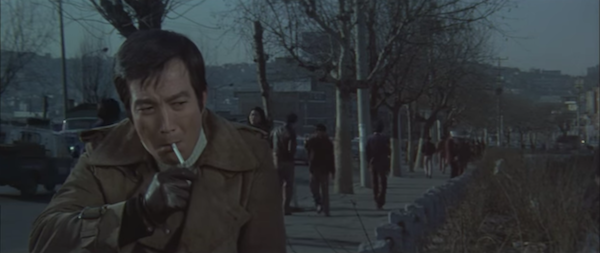
If you want to go see a movie in Seoul, you might well go to Wangsimni. Right above the neighborhood’s station on the central circular subway line stands a high-rise shopping complex whose multiplex theater boasts the largest IMAX screen in the country. It went up less than a decade ago, in 2008, but Seoul changes quickly. This has held true at least since the end of the devastating Korean War, when the capital of the new state of South Korea had nothing to do but develop. Still, Seoul remained in fairly rough shape a decade later, in the early 1960s, the time in which the protagonist of 1976’s Wangsimni, My Hometown (왕십리) last saw his homeland.
The disoriented but stylishly dressed Joon-tae first appears onscreen in a once deeply familiar Seoul, made strange in just fourteen years. As he struggles to place himself through the window of a cab, the driver asks what he’s looking for. “I don’t see the trolley,” says Joon-tae. “It’s been at least ten years since they got rid of the trolley,” the driver tells him. Joon-tae asks about another railcar he used to ride in his youth. “Trolley, railcar… that’s all history.” An Angeleno in the same era and in the same situation would have had the same conversation. Where did all the streetcars of the far-reaching Pacific Electric and Los Angeles Railways go?
Their disappearance looked dramatic enough to convince some of a conspiracy, but larger processes had converged to turn the city into something other than it had been before. Just as Los Angeles discarded the trappings of the late 19th and early 20th century it spent as a booming, barely-tamed settlement (and, to an extent, giant real-estate hustle) on the edge of the continent, Seoul discarded the trappings of the late 19th and early 20th century it spent as a subject of the Japanese empire. But that mid-1970s Angeleno riding back into town might also wonder about something else: where did all these Koreans come from?
Read the whole thing at the Los Angeles Review of Books.